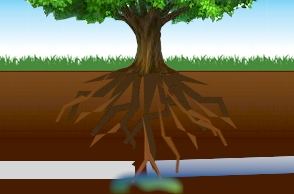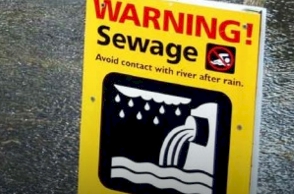Leaking Sewer Pipes – How it Happens
You may have heard about a crisis in our country involving aging bridges that need to be replaced. Most of us are already aware that there are thousands of bridges across the country in need of repair. But did you know there’s another, lesser known, aspect of our infrastructure that is aging as well?; … It’s our sewer systems..
Cast iron sewer pipes have a life expectancy of 25 to 35 years, after which they can fail at any time. Concrete pipes can crumble or develop cracks over time. Sewer pipes can be cracked or clogged by the intrusion of moisture-seeking tree roots. They can also be clogged by accumulating debris such as toilet paper and feminine hygiene products. Afterwards, these clogged and damaged pipes can leak household sewage slowly into the environment for years before they are noticed.
Tree Roots and Cracked Pipes

Aging sewer lines can develop cracks and loose joints allowing small amounts of water to escape. Tree roots, capable of detecting even minute amounts of water vapor in the ground, will seek out the source. Once the tree roots reach the crack or loose joint, they will grow through the opening to reach the nutrients and moisture, and expand inside until the line is completely blocked. Under increased pressure the cracks and loose joints become worse, allowing escaping sewage to seep into the environment and saturate the surrounding soil.
Escaping Sewage
The steady seepage of sewage through small cracks and joints is termed “exfiltration”. This escaping sewage can saturate the surrounding soil and create a constant flow into soil and local streams, a condition that is worsened during rains and especially heavy downpours. Some storm water lines dump water directly into nearby creeks, but some lines dump storm water into the same pipes that carry waste from our homes. (more on this in the section on concrete and urban development.) In the case where storm water dumps into the same sewage lines as household waste, heavy downpours can amplify the amount of sewage seeping through cracks, saturating the soil, making its way into nearby bogs and marshes, streams, and rivers.
Aging Sewer Lines

“There are 600,000 miles of sewer pipes across the country and the average age is 33 years. Some pipes in cities along the eastern seaboard are nearly 200 years old. Some are even made of wood. The American Society of Civil Engineers has given America’s wastewater infrastructure a “D” grade overall.” Learn more about how sewage pollution ends up in rivers:
https://americanrivers.org/threats-solutions/clean-water/sewage-pollution/
Concrete and Urban Development Click here to Read..
What is a River Basin?
A river basin is the land that water flows across or under on its way to a river. Just as a bathtub catches all of the water that falls within its sides, a river basin sends all of the water falling within it to a central river and out to an estuary or to the ocean.. Learn more
River Conservation (Introduction)
We’ve collected together some information and interesting resources to create this short introductory guide to river conservation,- including some basic river facts everyone should know….. Learn more
Why we’re green
We’re taking the time and making the investment to shoulder more responsibility towards operating a more sustainable, environmentally friendly company not only for the advantage of our community and the planet as a whole but for the advantage of owning and operating a more sustainable business… Learn more

